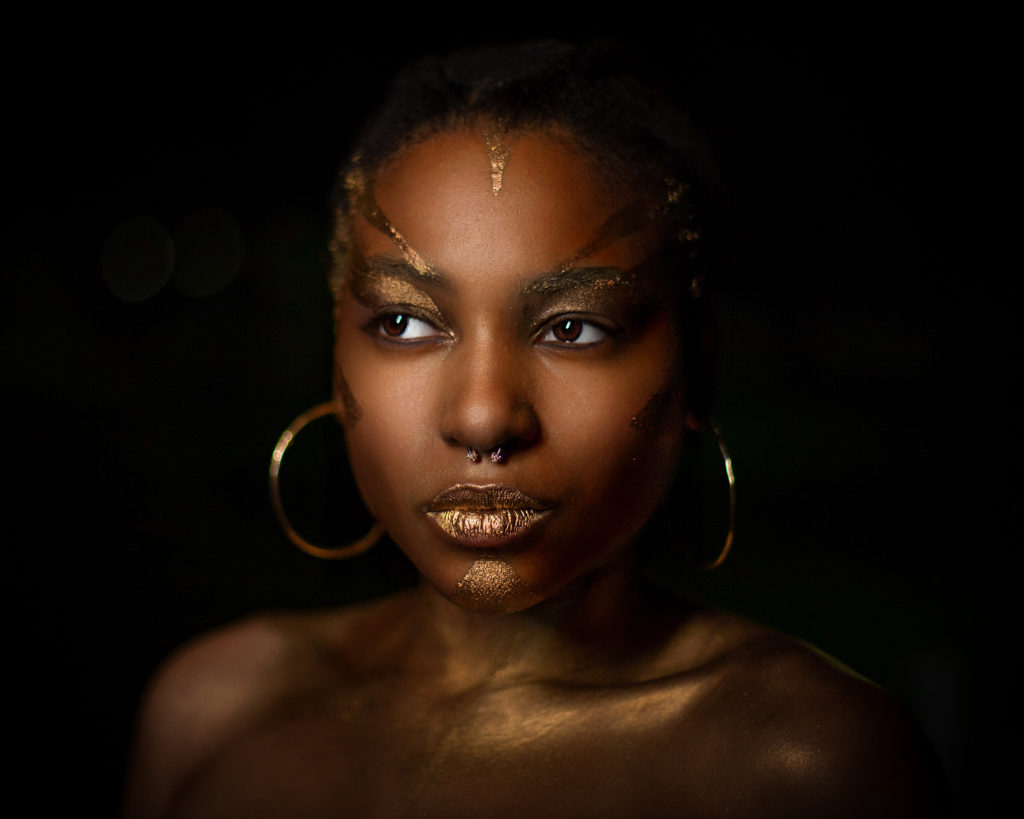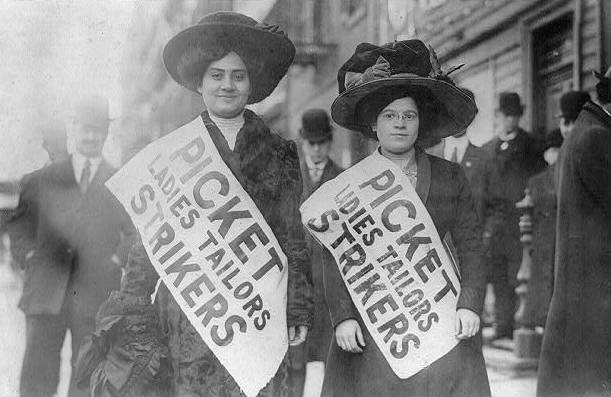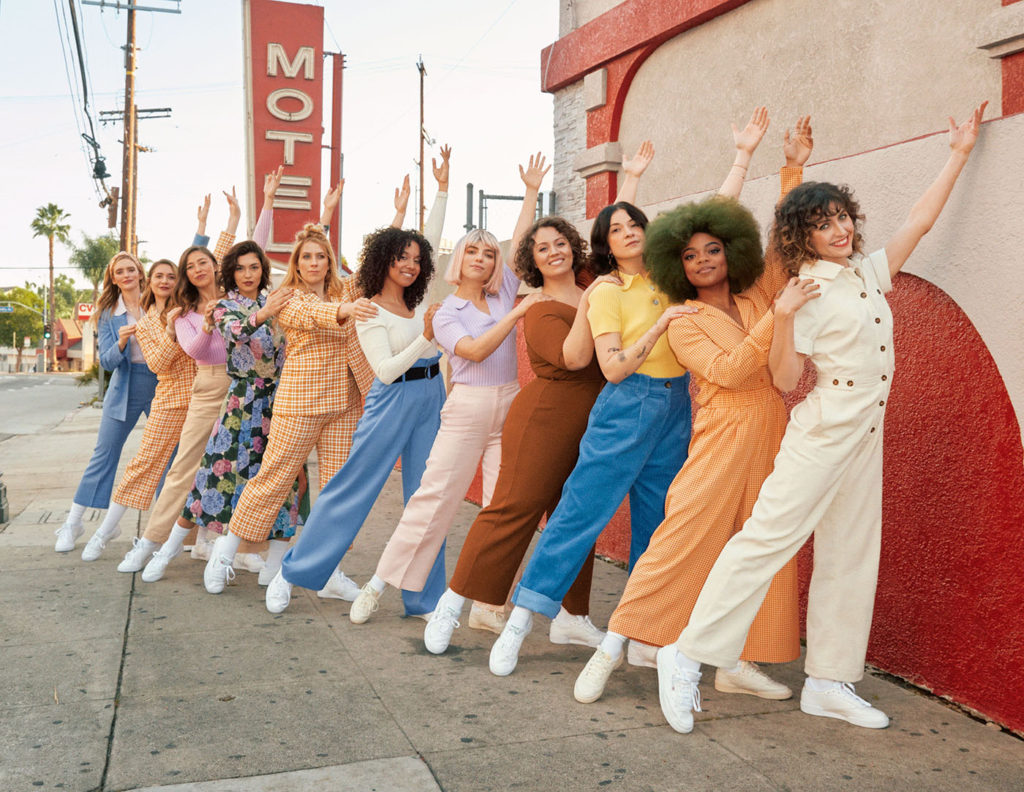Celebrating Women’s Day 2021
March 8 is International Women’s Day – this year and every year. It was established to promote equity for women in all aspects of life. As our observance of Women’s Day, the Gwangju News has asked three of our magazine’s contributors to write about their impressions of Women’s Day and what it represents. Here we present their thoughts. — Ed.
When Sleeping Women Wake, Mountains Will Move
By Boipelo Seswane.
I have to admit, writing this now feels incredibly affecting. As a South African woman, whenever I think of Women’s Day, I think of all the women who stood their ground to fight for the rights of South Africans long before I joined this world. The legacy symbolizing the incredible courage and strength embodied by the 20,000 women who led the Women’s March of August 9, 1956, is nothing short of tremendous.
It is similarly difficult writing these words while reckoning with what it means to be a person who identifies as a “Black/other/woman” in South Africa. Living in Korea right now, I cannot begin to disregard the privilege my body moves in every day. In being able to dress how I want, be who I want, love who and how I want in the most incredible enriching ways. For all the strides that have been taken by women for the betterment of South Africa, there is much work that still needs to be done in society for women to fully be in the simple act of existing – whole, powerful, magnificent and brilliant in whatever ways we want. I cannot wait for that day to rise.
I also often think of the phenomenal Toni Morrison who wrote in her 1987 novel Beloved: “She is a friend of my mind. She gather me, man. The pieces I am, she gather them and give them back to me in all the right order. It’s good, you know, when you got a woman who is a friend of your mind.” Though I found her words much later in life, I cannot underplay how much the structure of sisterhood – women doing phenomenal things together – would come to influence my life. For as long as I can remember, my days have always been molded by women: my mother, aunts, sisters (blood and chosen), and teachers – women who have left tiny bits of their own experiences, selves, and wisdom in my sphere. In this way, familial and matriarchal connections have always played a strong role in my life, with women truly forming my foundation – and where I am intentional in my living. I am in awe of the women who have been friends of my mind.

My anchor throughout this life game has been a single mother of six who poured every part of herself possible into giving us everything we needed, and any extra bits she could. My mother set the stones for the foundations of everything that sustained me and the way that I see the world. She was a woman who clarified how important it is to always pick yourself – woman – above all else, and in turn, she taught me what it means to be the kind of woman who holds space for others. Women who build entire villages and cherish all the rising, done together, celebrating and investing in each other. This is my tiny ode of thanks to the women who have come before and set the paths ablaze for us and our being.
International Women’s Day: Learning and Appreciating the History
By Katy Clements.
When I volunteered to write a piece about the history of International Women’s Day (IWD), I was excited. After I thought for a moment, I realized that I did not know much about the history myself. I am from Tennessee, a state that is located in the middle of the Bible Belt of the United States. I attended many kinds of churches under different denominations, but they all had one thing in common: Women were treated as lower than men. In my church, women were required to wear dresses, not be alone with men, and were forbidden to preach. Even though I missed out on this key piece of history and change as a youth, I can now educate myself and help share the history of this profound day.
Throughout history, women of all nationalities have faced many challenges. There are many matters that contributed to the oppression of women. These include not being able to vote, own property, or simply travel without a man. The road to women’s rights and recognition has been a long one.
The history of IWD goes back further than the holiday we recognize nowadays. It began in 1848 when two women named Elizabeth Stanton and Lucretia Mott were infuriated that they could not participate in a discussion about anti-slavery. In response to them not being allowed to join any talks, they organized the Seneca Falls Convention, which is regarded as the first women’s rights convention. During this gathering, Mott and Stanton motivated others to take command over their own lives and had willing attendees sign a document known as The Declaration of Rights and Sentiments.

The next big step for the movement came in 1908 when thousands of women in New York City gathered to protest bad working conditions. The female workers of a blouse factory faced extremely long work hours, horrendous pay, and unsafe working conditions. A year later, in 1909, the Socialist Party of America celebrated the first IWD in remembrance of the strike. The following year, Copenhagen hosted the Second International Socialist Women’s Conference, held in conjunction with the 1910 Socialist Copenhagen World Congress. Due to the fact the conference and the congress were happening simultaneously, there were delegates in attendance from seven other countries.
The following year, the first IWD was observed on March 19. On this day, the occasion was celebrated by Austria, Denmark, Germany, and Switzerland. At the celebrations, women demanded the right to vote, hold public office, and an end to sexual discrimination in the workplace. At this time, the permanent date had not been assigned, and the United States still observed the occasion on the last Sunday in February. On March 8, 1917, the first day of the Russian Revolution, the citizens in Russia began to riot due to the inability to feed their families. The riots began when women picketed with signs demanding bread, peace, and the removal of the czar. A few days after the strike and riots began, the czar abdicated, and women were granted the right to vote.

As the First World War raged on, women began to take up positions usually held by men. A lot of women became mechanics and worked on many of the airplanes that were used in battle. Women all over the world, though mostly barred from combat, served their countries on the home front. Not only were women working as mechanics, but also as nurses, doctors, switchboard operators, and by raising hopes and morale.
Until 1967, the holiday was thought to be mainly communist in the United States, until feminists began to reclaim the celebration. It was at this time in the U.S. that there was a rise in crisis centers, the YWCA (Young Women’s Christian Association), and shelters for women. There was also a rise in education regarding birth control and the right to privacy. After this, labor organizations began to join the cause, and proper childcare, wages, and recognition in the workplace were also fought hard for. I am in awe of what I owe women who came before me.
In 1975, the year was declared International Women’s Year by the United Nations, and the United Nations Decade for Women (1976–1985) soon followed. This was when March 8 was officially assigned as the day of observance for IWD, and a lot of recognition was made in regard to the discrimination women were facing. The first UN conference for women was held in Mexico City, and it led to funds for the educational advancement of women, a declaration of equality, and the removal of gender discrimination in written laws.

Presently, the United Nations is working tirelessly with all countries to establish better opportunities for women and female children. Though a lot of progress has been made, we still have a long way to go. There are still places in the world that enforce the child marriage, mutilation, and illiteracy of women and girls. By educating people and informing others of human rights, we can soon ensure a bright and equal future. I am truly humbled that I had the opportunity to write this piece and that I have had the chance to discover how much sacrifice has been made so that I could have the life I live now. If you want any more information about how to help women and girls, please visit www.sheheroes.org. For more information about IWD, please visit www.internationalwomensday.com.
A Recognition of How Hard Women Work & How Much More We Deserve
By Cristina Murano.
I went to my first International Women’s Day (IWD) rally in Toronto, Canada, as a young adult. At the time, I was studying feminist theory in university and fully immersed in the energy of feminist political communities. I felt fortunate to be surrounded by wickedly smart and complex women. They taught me a lot about what it meant to be inclusive, bold, and committed.
In Toronto, 1978 marked the beginning of an IWD committee, which was formed to host the annual event and raise the profile of women’s issues.a Attending an IWD rally decades after its inception felt like carrying history and stepping into hard-won privileges. And that is partly what IWD means to me: a recognition of how hard women work. Our labor, caregiving, and activism can be witnessed globally. Many women give life, which is an astounding thing. We often endure, speak about, and confront horrific violence and neglect.
All the gains we have fought for – gender equity laws; anti-racist action; transgender expression; lesbian, gay, bisexual, and queer rights; access to education; equal pay for equal work; disability justice; migrant and religious protections; reproductive freedoms; and so much more – are what IWD represents.

Being specific about the details of women’s lived experiences, which are diverse, intersectional, and nuanced, is also what IWD means to me. Honoring that there is no single narrative to what being a woman is but instead a shared experience of gender; a shared experience of violence and control; a shared experience of resistance to these demands; and a shared future of accountability, healing, love, connection, and thriving that guides and strengthens our futures.
As a reminder and for framing: “137 women are killed by a member of their family every day … adult women account for nearly half (49 percent) of all human trafficking victims detected globally … 15 million adolescent girls worldwide, aged 15–19 years, have experienced forced sex … school-related gender-based violence is a major obstacle to universal schooling and the right to education for girls … across five regions, 82 percent of women parliamentarians reported having experienced some form of psychological violence while serving their terms.”b
IWD is a day that captures a larger picture about women’s work, but our visionary and influential contributions to labor, culture, art, education, politics, and law are happening all the time. Here is a tiny sample of examples to sit with:
- The poetry and writing of Audre Lorde: Audre Lorde 1934–1992 – Poetry Foundation. https://www.poetryfoundation.org/poets/audre-lord
- The organizing of Mayan women in Guatemala: How Mayan Women in Guatemala Are Fighting to Protect Their Designs – and Their Identity. Association for
- Women’s Rights in Development. https://www.awid.org/news-and-analysis/how-mayan-women-guatemala-are-fighting-for-their-identity
- The advocacy of transgender women for legal protections and a right to life: Rights in Transition: Making Legal Recognition for Transgender People a Global Priority. Human Rights Watch. https://www.hrw.org/world-report/2016/country-chapters/africa-americas-asia-europe/central-asia-middle-east/north-0#
- The leadership and activism of Indigenous women in Canada: What Indigenous Activists Want You to Know About the MMIWG Inquiry. FLARE. https://www.flare.com/news/mmiwg-inquiry/
- The work of women and girls with disabilities: Women Enabled International Survey and Mapping Project. Women Enabled International. https://womenenabled.org/mapping.html
- The deep and on-going feminist organizing by Filipino women: The Women Who Helped Shape Philippine Feminism. CNN Philippines. https://cnnphilippines.com/life/culture/2019/3/14/The-women-who-helped-shape-Philippine-feminism-.html
- Women’s environmental coalition work throughout Africa: Network of African Women Environmentalists (NAWE). UN Environment. https://www.unenvironment.org/explore-topics/gender/what-we-do/network-african-women-environmentalists-nawe
- The vision and guts of women in politics: Female-led countries handled coronavirus better, study suggests. The Guardian. https://www.theguardian.com/world/2020/aug/18/female-led-countries-handled-coronavirus-better-study-jacinda-ardern-angela-merkel
I encourage you to discover the feminist work that speaks to you, educate yourself about its history, and not only honor and respect this work, but thoughtfully and expansively contribute to it.
Resources
aRise Up. (n.d.). International Women’s Day Committee (IWDC) / Toronto Socialist Feminist Action (TFSA). https://riseupfeministarchive.ca/activism/organizations/ international-womens-day-committee/
b UN Women. (2020, November). Facts and figures: Ending violence against women. https://www.unwomen.org/en/what-we-do/ ending-violence-against-women/facts-and-figures
THE AUTHORS:
Boipelo Seswane is a Seoul-based South African artist. She is a teacher, performer/creator (actor, model, painter), and writer with experience in multiple facets of creativity, including writing, editing, theater, and film. She has always been interested in interrogating life through words and other forms of expression. Instagram @bopzybee
Katy Clements has been a writer for the Gwangju News since 2019. She is from Memphis, Tennessee, in the U.S. and has a degree in criminology and sociology. In her free time, Katy likes to read, write fiction, and watch films. She lives in Mokpo with her husband.
Cristina Murano’s work is in the areas of education, equity, public governance, and sport, with a focus on youth, women, and 2SLGBTQ+ people. She is originally from Toronto, Canada. Instagram: @profondoluce







